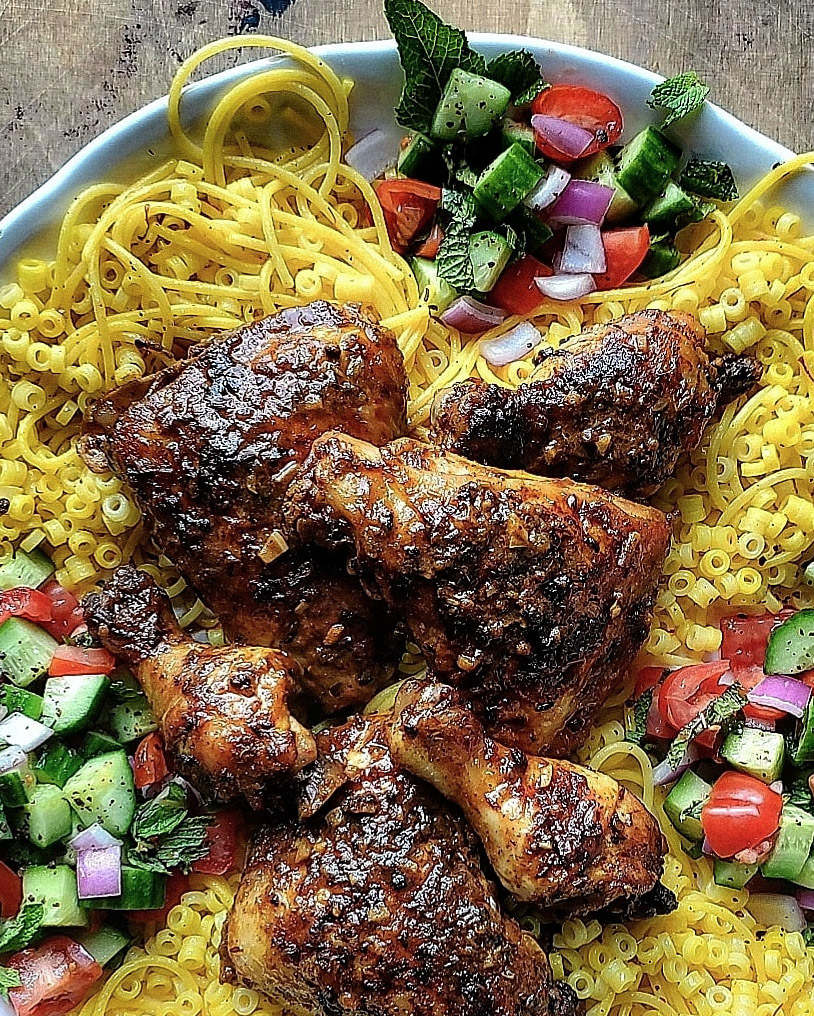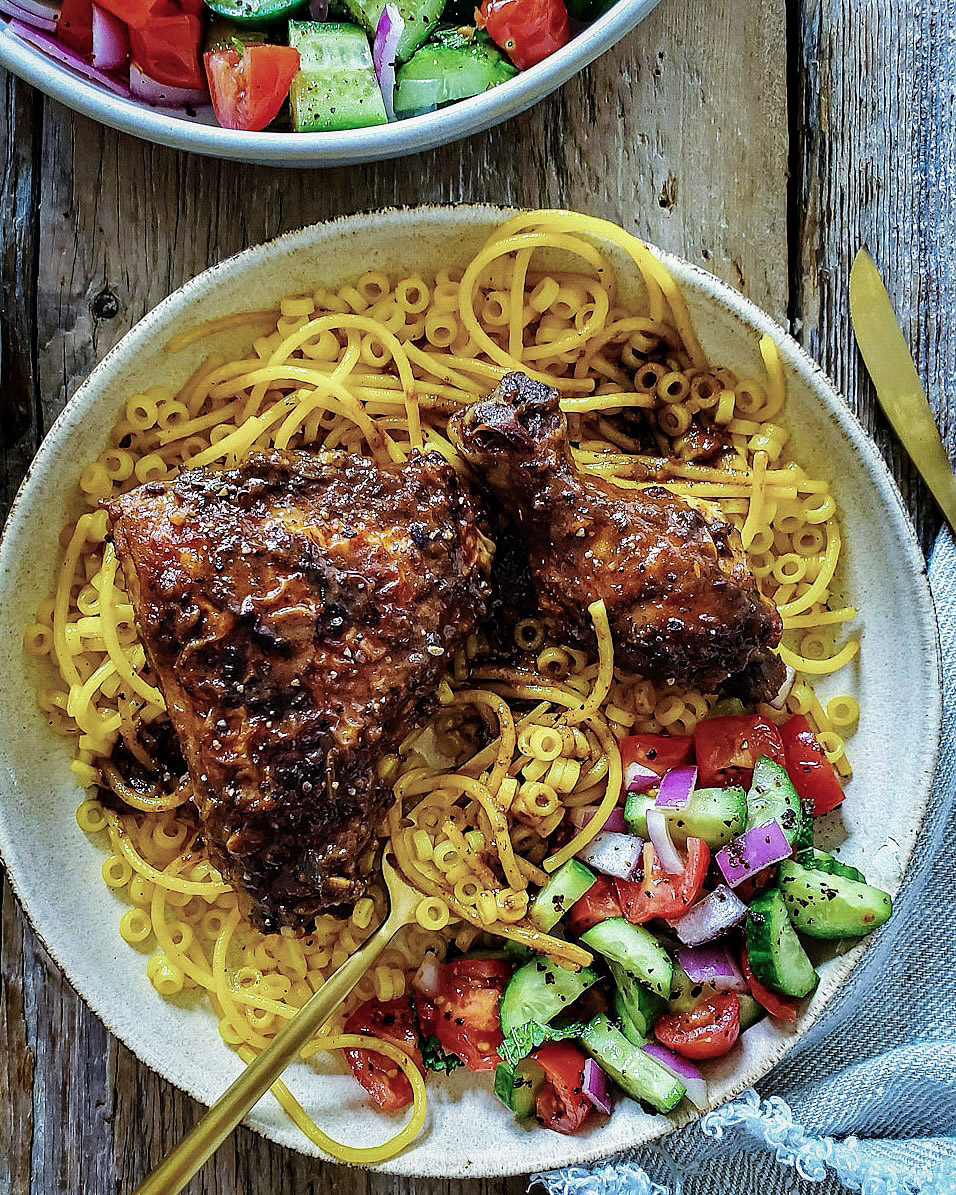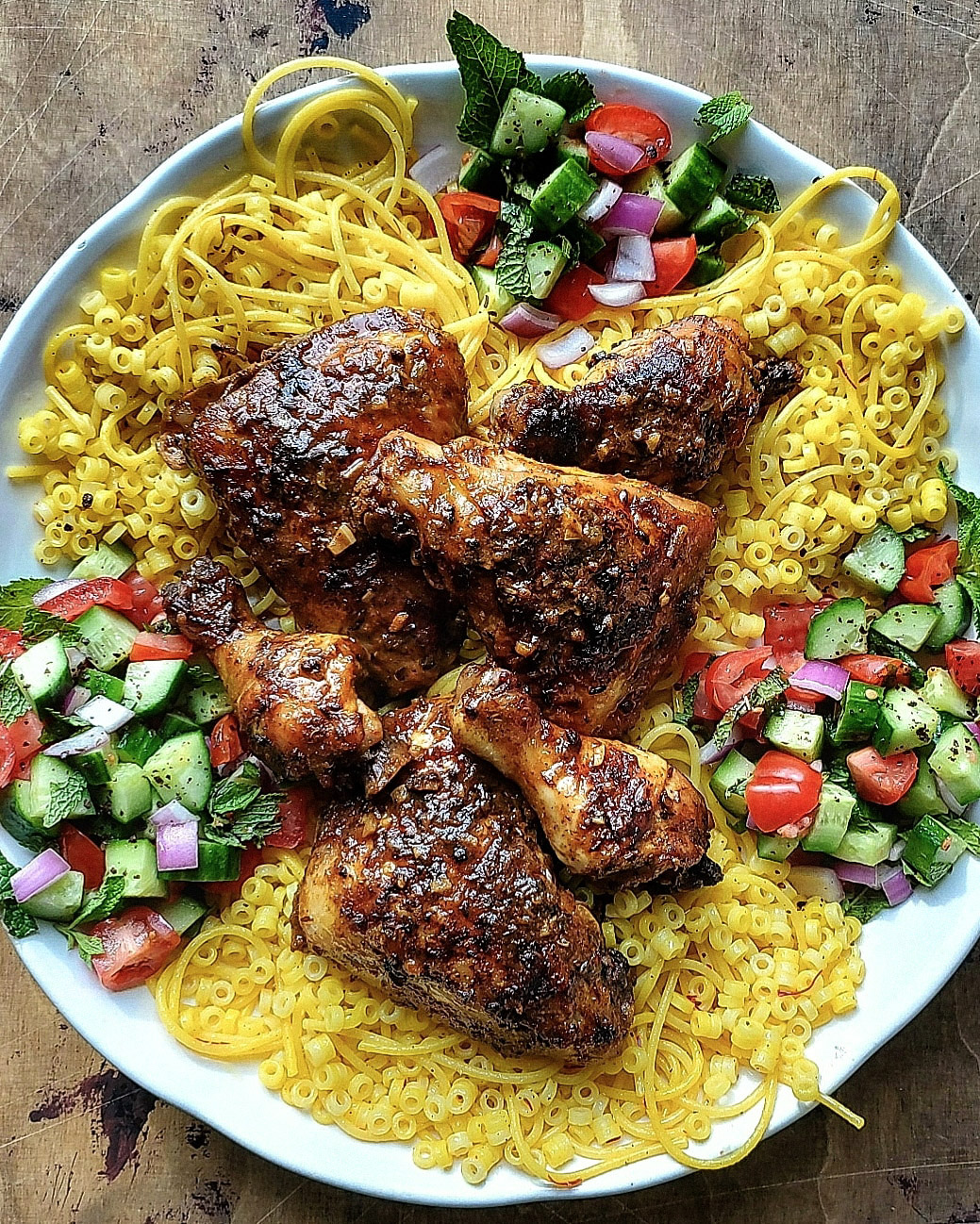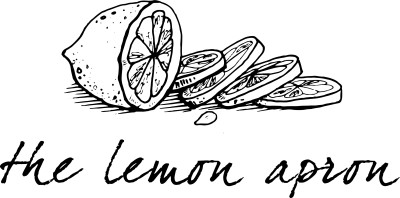Chicken and pasta, what more could I ask for, as a great comfort dinner?

Eat, Habibi, Eat
This is the first recipe that I am making from ‘Eat, Habibi, Eat’ by Shahir Massoud. Shahir is one of our modern Canadian food joys. Even though he was finishing up to become a chartered accountant, his heart wasn’t in it. He broke the news to his shocked parents that he was going to cook. And cook he did. After schooling in NYC, he went on to train at classic French and Italian restaurants. He gleaned all that he could and returned home to Toronto, continuing to hone his skills both in the kitchen, and even cooking for an audience on tv. But after all was said and done, what makes me most happy is that he decided to go back to his roots and share the food of his family and childhood in this first book. Shahir has payed homage to his Egyptian heritage, as well as a nod to the French and Italian influences he picked up in New York, and created a collection of fresh and accessible Middle Eastern dishes, with a modern twist.
He does put out the disclaimer that his recipes are NOT the traditional versions of the classic recipes we may have experienced, grew up with, or are looking for. But that’s fine. We have lots of access to those classic recipes these days. Instead, we have some really fun meals and methods presented to us. Along with the herbs and spices we may know and have in our cupboards already, he goes through the list and adds kalongji seeds, mahlab, and mastic to the collection. I haven’t made a recipe using these three yet (the only three ingredients that I don’t already have) but when I do, I’ll let you know how it goes!
Oh, I should say, Habibi is an Arabic word, translates to ‘My Darling’ in English. It’s a term saved for closest friends and family. And this is how Shahir approached the book. Feeding good friends and family!
Some of the Recipes that Caught my Eye
I love that the first recipe in the book is his Grandfather’s Ful Mudamas, or cooked fava beans (think creamy and thick like refried beans, but with an Egyptian twist. Shahir was all set to tweaking the recipe a bit, his mom freaked out, “NO, you can never change the fava bean in this recipe! The Egyptian people will never forgive you!” I do agree. It’s such an iconic breakfast dish, that changing the bean reduces the dish to just another chunky hummus or dal. I’m happy he shared the recipe just like his grandfather made it. It’s usually served on the side with eggs and flatbreads. Can’t wait to make it!
From Egg in a Cloud Shakshuka, Black and White Hummus, Crispy Cauliflower and Turmeric Bites, Seared Halloumi and Orange Glazed Beet Salad to Grilled Calamari with Tomato Jam, and Black Lime Rack of Lamb with Cured Olive Pan Sauce, there is something for everyone in this book, if you want to create a party in your mouth!! Of all the sweet treats in the book, including his take on bread pudding, Basbousa and several tarts, the one that captured my attention is the Dukkah Brittle. I love the idea of savoury combining with sweet like this, as well as a little heat!
Harissa Chicken Thighs with Saffron Israeli Couscous
The recipe I’m going to share with you today is the Harissa Chicken Thighs with Saffron Israeli Couscous. Approachable, easy and full of great flavours. It’s really as easy as marinating chicken pieces in a combo of fresh made harissa paste, olive oil, garlic, and brown sugar. The chicken pieces are seared and then finished in the oven with chicken stock added to the remaining marinade to create a sauce which thickens beautifully. The harissa paste is easy to make, the hardest part being roasting a red bell pepper in the oven till the skin gets charred. Once it cools the skin will pull off easily, and it gets blended with red chilli peppers, onion, garlic, tomato paste, and toasted cumin, caraway and coriander seeds. Lemon juice is added at the end to thin it a bit and brighten the flavour. It will keep in the fridge for a week or so, and is fab added to sandwiches (yay spicy grilled cheese) or use instead of ketchup on your eggs! Shahir recommends dried 2-3 chilli peppers to be used in the paste. Now, I happened to have bird’s eye chilli peppers in the cupboard. They’re small, but hot, so I made a judgement call to use 5 or 6. But use the amount you think the family will enjoy.
While the chicken is roasting, couscous is toasted and cooked and then finally tossed in homemade saffron butter. This is my new favourite condiment!! Now that I have a jar of this seriously golden butter with bright red saffron threads dotting the butter, I am looking for ways to use it. From cooking eggs in it, to adding it to rice, even frying potatoes in it. The entire meal is ready in no time, if you have made the harissa and butter in advance (which you should anyway, just to let the flavours meld) Add a side veg or salad, and this is a meal you can turn to often. I whipped up a simple Shirazi salad of tomatoes, cuucmbers, onions, mint, olive oil, lemon and sumac. It was the perfect complement.

My Changes
First off, despite the name, I used whatever chicken happened to be in the freezer, in my case some thighs and drummies. You could even use a whole chicken cut up into pieces. Or how about whole legs? They will all work.
I can’t have Israeli (or pearl) couscous (not gluten free) but I did want to stick to pasta, even though rice would be the obvious alternative. So I pulled out my jar of little tubey pasta! And before I could close the cupboard door, the spaghetti caught my eye. It might be fun to use spaghetti instead. In the end I couldn’t decide, so I used both! Just cook them separately, since the the cooking times would be different.
For the saffron butter, I followed the recipe of melting the butter and saffron and then pouring it into a blender to whip up. It worked, but it was a mess to clean the blender afterwards. Going forward, I decided that melting the entire cup’s worth of butter is unnecessary. All you need to do is let all the butter come to room temperature, till it is nice and softened. From this, take 1/4 cup of the butter and place it in a small butter pot to melt over medium low heat. You will add the saffron threads at the same time. As soon as the butter is melted, take it off the heat and let it rest to let the saffron really release its fragrance and golden goodness. Then just take this butter and stir it through the remaining softened butter. Use a bit of strength until the butter and saffron are equally incorporated. Then you can spoon it into a container with a lid and store it in the fridge. And no blender to clean! Just take it out of the fridge well before you need it, to let is soften a bit.

Like I said earlier, this is a recipe I will make often. I will make the pasta on its own and maybe just add some sautéed shrimp or veggies.
If you want a cookbook that has intriguing recipes, fun ingredients, and easy to follow instructions for great family meals and desserts, I highly recommend Shahir’s book! Thanks to Appetite Random House for letting me review the book.
For some alternate salad options for this dish, you will love my Fattoush, Kale, Walnut and Apple Tabbouleh, All Things Green and Herb Salad or even the Fava Bean, Mint and Manchego Salad.
Love Jen


Harissa Chicken With Saffron Israeli Couscous
Ingredients
Harissa Chicken
- 1 cup Harissa see below
- ¼ cup olive oil
- 2 cloves garlic minced
- 2 Tbsp brown sugar
- 2 lb chicken thighs bone in and skin on
- Salt
- 3 Tbsp olive oil
- 1 cup chicken stock
Saffron Israeli Couscous
- ¼ cup olive oil
- 2 cups Israeli couscous
- Pinch salt
- ¼ cup Saffron Butter see below
Harissa Paste
- 2 –3 dried red chilies
- 1 red pepper
- 2 Tbsp olive oil
- 1 onion minced
- 3 cloves garlic minced
- 1 Tbsp cumin seeds
- 1 Tbsp coriander seeds
- 1 Tbsp caraway seeds
- 1 6 oz can tomato paste
- 1 tsp salt
- 1 Tbsp lemon juice
Saffron Butter
- 1 cup butter
- 1 tsp saffron threads
Instructions
To make the Harissa Chicken:
-
In a large mixing bowl, combine the harissa, olive oil, garlic, brown sugar, and ¼ cup water. Add the chicken, cover with plastic wrap and refrigerate for at least 2 hours, or even marinate overnight.
-
Bring the chicken to room temperature and preheat the oven to 400°F. Reserve the excess marinade, but pat the chicken dry to help with the sear. Season with salt.
-
Heat the olive oil in a large ovenproof skillet over medium-high heat. Add the chicken, skin side down, and sear for 1 to 2 minutes. Flip over and transfer to a plate or sheet pan. Work in batches if necessary, to avoid overcrowding the pan. Deglaze the pan with the chicken stock, scraping up any brown bits with a wooden spoon. Add the reserved marinade and bring to a boil.
-
Add the chicken back to the pan, in one layer, and roast in the oven for about 35 minutes or until the internal temperature is 165°F.
To make the Saffron Israeli Couscous:
-
Heat the olive oil in a large skillet set over medium-high heat. Add the couscous and toast for 1 to 2 minutes, allowing the couscous to brown and achieve a nutty, more complex flavor.
-
Cover with 5 cups water and salt, then bring to a boil. Reduce to a simmer and cook for 15 to 16 minutes, or until all of the liquid has been absorbed and the couscous is al dente.
-
Finish by stirring in the saffron butter and an additional pinch of salt if needed.
-
Serve each plate with some couscous on the bottom, topped with a chicken thigh and some of the remaining sauce.
Harissa Paste
-
Rehydrate the red chilies (adding more if you like extra heat) in a bowl of hot water.
-
Roast the red pepper over an open flame, or place in a 450°F oven until blackened, about 15 minutes, turning regularly.
-
Transfer to a bowl and cover tightly with plastic wrap. Allow the pepper to steam for several minutes, then remove the skin.
-
Heat the olive oil in a large skillet over medium heat. Sweat the onion and garlic for 6 to 7 minutes.
-
Add the cumin, coriander, and caraway seeds and continue to cook for 1 minute. Add the tomato paste and cook until the onion is totally softened and the paste is no longer raw, another 1 to 2 minutes.
-
In a blender, combine the onion mixture with the roasted red pepper, chilies, and salt. Blend until smooth and finish with the lemon juice. Transfer to a resealable plastic container or squeeze bottle. This will keep in the fridge for 1 week.
Saffron Butter
-
Melt the butter and saffron in a saucepan over medium-low heat.
-
Turn off the heat and allow the mixture to infuse for 5 to 10 minutes. Transfer to a blender and blend until very smooth. Transfer to a resealable container and allow to cool, then refrigerate for up to 10 days. See the blog post for my recommended variation.
Recipe Notes
Every oven is different, so the chicken may take longer in yours. Go by the temperature in the end. The size of the chicken pieces will also affect the cooking time.

Leave a Reply